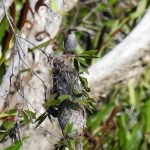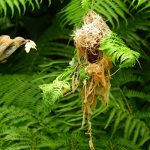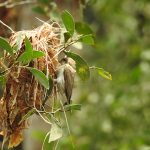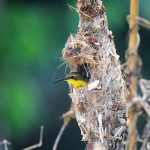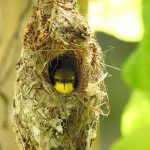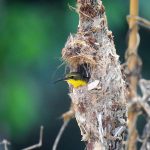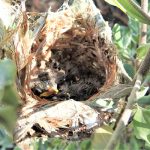PENDULOUS NESTS
Pendulous/Hanging Nests
Australia is home to a stunning diversity of birds, each with their own unique nesting habits. Among the most remarkable are those that construct pendulous nests—delicate, bag-like structures that dangle from trees like ornaments crafted by expert hands.
What Are Pendulous Nests?
A pendulous nest (pendulous meaning ‘hanging down loosely’) is a cup- or sock-shaped structure suspended from branches. These nests often swing gently in the breeze, which can help deter predators by making them harder to reach.
Pendulous nests are wonders of natural engineering, crafted by birds using a variety of materials sourced from their immediate environment. Each species displays a unique architectural flair, but a few key materials are favourites across the board.
Common Materials Used
| Material | Description & Purpose | Sensory Qualities |
|---|---|---|
| Plant Fibres | Strips of bark, grass stems, leaves, and rootlets | Coarse, flexible, earthy scent |
| Spider Silk | Used to bind and reinforce the nest structure | Silky, sticky to the touch, delicate |
| Animal Products | Wool, feathers, fur—often for lining the nest | Soft, warm, insulating, downy feel |
| Moss and Lichen | Incorporated for camouflage and softness | Spongy, sometimes slightly damp |
| Human Materials | Occasionally, threads or synthetic fibres found nearby | Smooth or fibrous, varied colours |
Why These Materials?
- Flexibility and Strength: Spider silk and plant fibres bend without breaking, allowing the nest to move with the wind instead of being torn apart.
- Insulation: Feathers, animal hair, and wool keep chicks warm and protected from temperature extremes.
- Camouflage: Moss, lichen, and bark help the nest blend into its surroundings, reducing visibility to predators.
Preserving the habitats where these natural materials are abundant is essential. Without healthy forests, meadows, and wetlands, birds would struggle to find the resources needed for their extraordinary constructions.
Why Pendulous Nests?
- Predator Protection: Suspended nests are tricky for predators, such as snakes or goannas, to access.
- Weather Adaptation: The flexibility and placement help keep chicks safe from rain and overheating sun.
- Camouflage: Blending into leafy canopies, these structures often go unnoticed by would-be invaders.
The survival of these incredible nesting strategies depends on the health of native woodlands and forests. Loss of habitat through land clearing and fragmentation reduces the availability of safe nesting sites. Preserving mature trees and native plant life is essential to ensuring these birds continue to enchant future generations with their remarkable pendulous creations.
The artistry of pendulous nest-building highlights the creativity and resilience of Australian birds. By observing, learning about, and protecting these avian architects and their habitats, we help sustain the delicate balance of our natural world.

